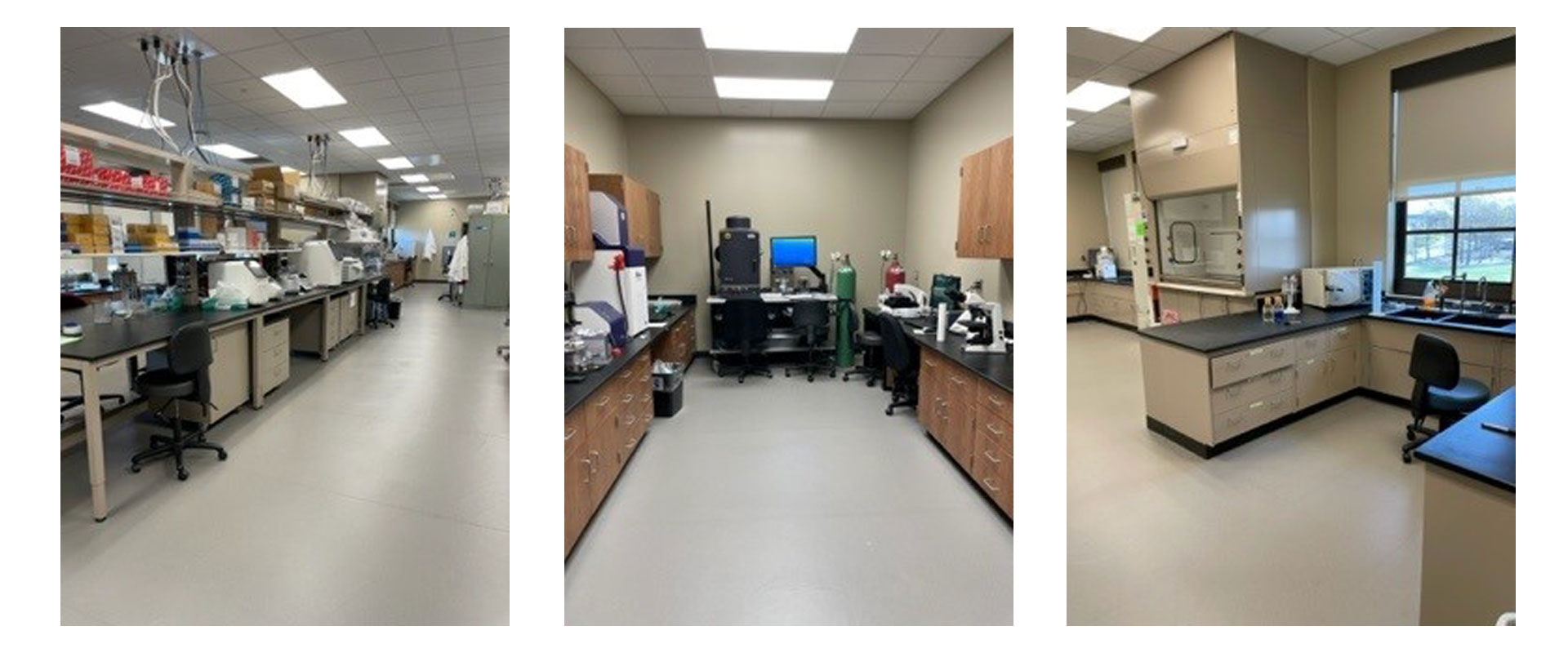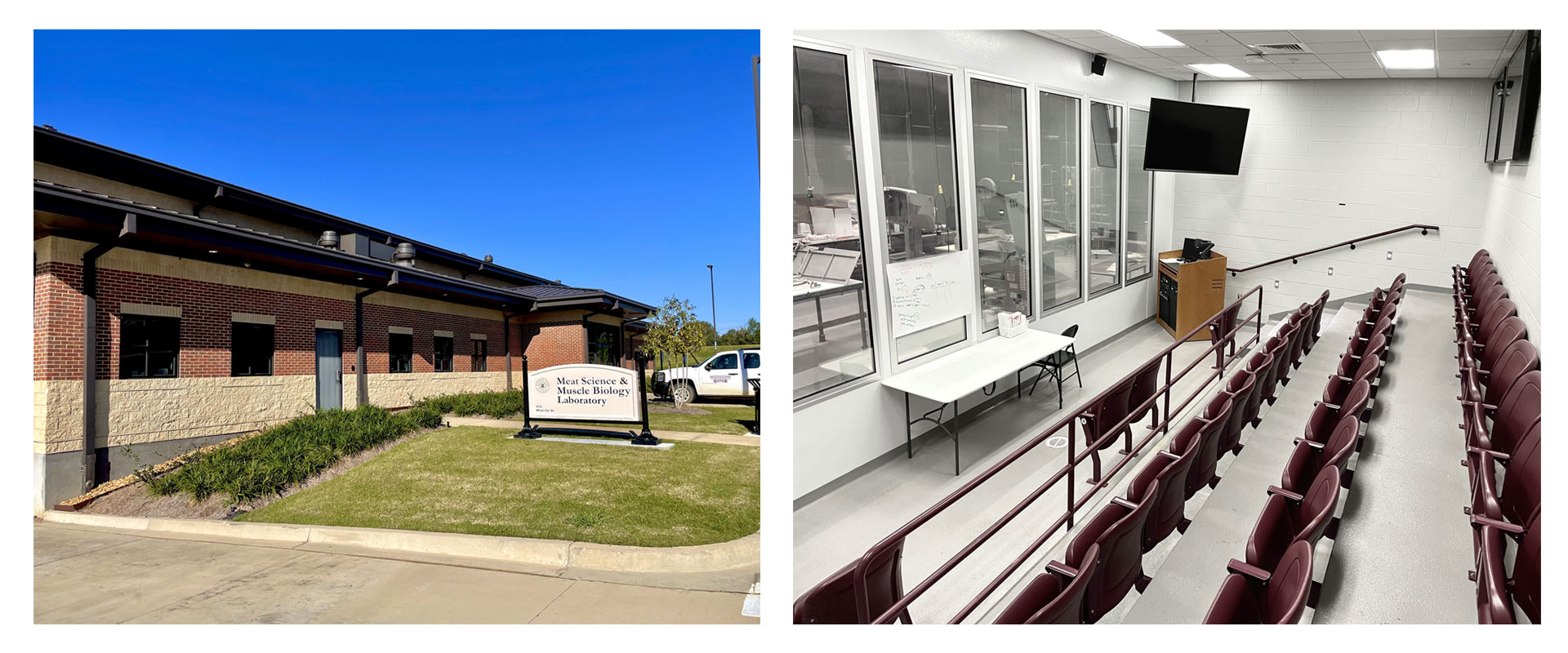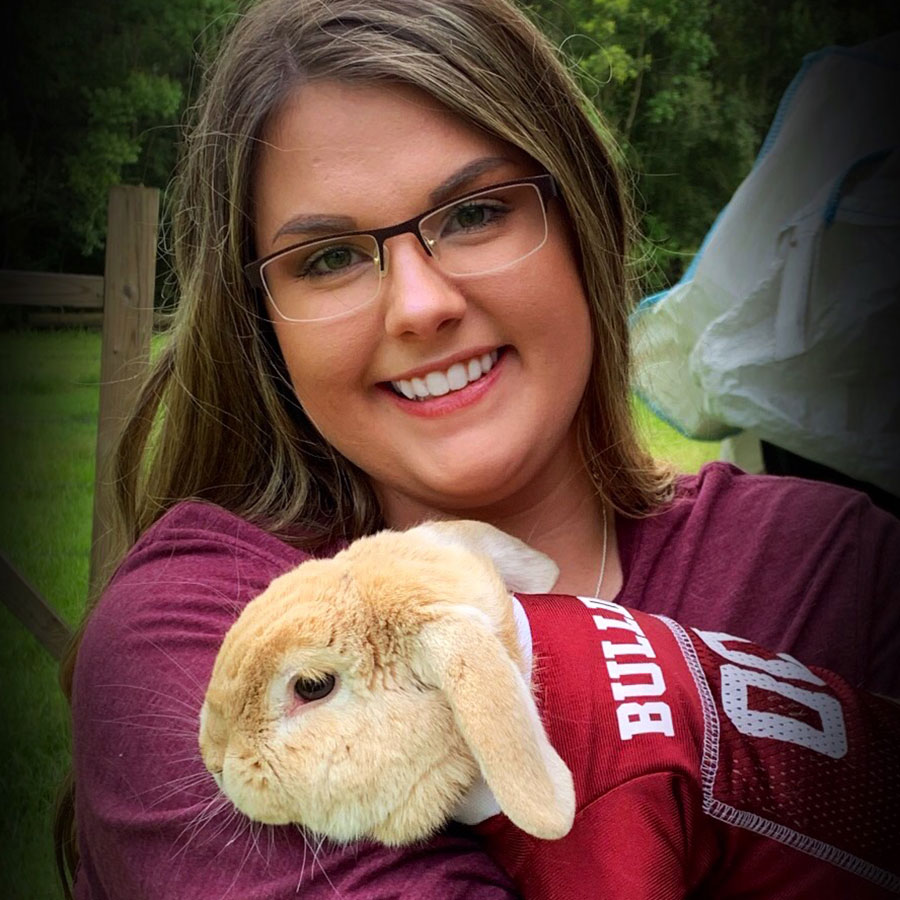Facilities
Animal and Dairy Science Building

The 34,500-square-foot building officially opened in September 2019. The three-story building houses the research, teaching, and outreach programs of the Department of Animal and Dairy Sciences. Locate the Animal and Dairy Science building on the campus map.
Animal and Dairy Science Laboratories

The laboratories of the Animal and Dairy Sciences (ADS) Department are located on the 3rd floor of the ADS building and are shared between faculty and post-doctorate scholars. The laboratories include:
- Radiation lab (206 sq. feet with 42.5 sq. feet of laboratory bench top) used for quantification of hormones
- Cell Culture lab (511 sq. feet with 111.25 sq. feet of bench top space) containing biological safety cabinets and multiple incubators
- Two General labs (1936 sq. feet laboratory with 477.5 sq. feet of bench top) utilized for DNA, RNA, and protein extraction and quantification as well as hormone and metabolite quantification using ELISA or GC-MS techniques
- Sample Preparation lab (403 sq. feet, 38.75 sq. feet of laboratory bench top) with large capacity sterilizer autoclave
- Microbiology lab (236 sq. feet with 90 sq. feet of laboratory bench top)
- Microscopy Imaging lab (236 sq. feet with 86.25 sq. feet of laboratory bench top) equipped with a high-resolution in vivo imaging system
- General lab (1988 sq. feet with 410 sq. feet of laboratory bench top)
- Embryo lab (356 sq. feet with 132.5 sq. feet of laboratory bench top)
- Future/Equipment lab (381 sq. feet with 0 sq. feet of laboratory bench top)
Bearden Dairy Research Center
The Joe Bearden Dairy Research Center supports departmental teaching and research activities along with providing the students of Animal and Dairy Sciences contact with modern techniques in Animal Agriculture as well as the opportunity for practical work experience. These experiences give the students in this curriculum insight into many technical challenges associated with the dairy industry.
Locate the Bearden Dairy Research Center on the campus map
Visit the Bearden Dairy Research Center web page
H.W. Essig Nutrition Lab in the James W. Scales Building
The H.W. Essig Nutrition Laboratory was named after a former professor and animal scientist in the Department of Animal and Dairy Sciences. The 5,650-square-foot laboratory conducts nutritive value analyses including proximate analysis, Van Soest fiber analysis, bomb calorimetry gross energy determination, pH determination, particle size determination, and in vitro dry matter disappearance on a variety of sample types. The laboratory provides training and hands-on experience for students and technicians in proper techniques and use of nutritional analysis equipment.
H. H. Leveck Animal Research Center
The H. H. Leveck Animal Research Center (referred to as South Farm by MSU personnel and alumni) provides a very important land resource which supports departmental teaching and various research activities associated with Animal Science curriculum. It provides the students of Animal and Dairy Sciences with hands-on learning opportunities in modern techniques in animal agriculture along with practical work experiences. Students gain insights into many technical challenges associated with the livestock and equine industries. In addition to extensive livestock facilities, the South Farm is home to a 120’ by 150’ covered equestrian riding arena constructed in 2021.
Locate the H. H. Leveck Animal Research Center on the campus map
Visit the H. H. Leveck Animal Research Center web page
Meat Science and Muscle Biology Laboratory

The 15,000-square-foot Meat Science and Muscle Biology Laboratory was officially opened in 2018. The laboratory is operated for meat science teaching and research in the Animal and Dairy Sciences and the Food Science, Nutrition and Health Promotion departments. The facility includes a 38-seat classroom for viewing meat fabrication that includes interactive video capabilities. The laboratory produces some of the finest beef and pork products around and offers them for sale to the public via the MAFES Sales Store. Products include ribeye steaks, ground chuck, sirloin roasts and many other cuts.
Locate on the Meat Science and Muscle Biology Laboratory on the campus map
Experiment Stations
The E. G. (Gene) Morrison Brown Loam Branch Experiment Station, located near Raymond in Hinds County, is a 1,730-acre experiment station within the Central Mississippi Research and Extension Center. Research is conducted at the station on development of replacement beef females to enhance efficiency of beef production systems. Efforts are underway to evaluate stocking density and management considerations for beef heifers reared in drylots.
The Prairie Research Unit, located in Monroe County on the Black belt Prairie soils of northeast Mississippi, is a 2,456-acre experiment station within the North Mississippi Research and Extension Center. Research is conducted at the station on nutritional and management strategies to optimize beef production efficiency. Current research efforts include evaluating the impacts of cover cropping system on grain yield, soil health, forage production and animal performance. Efforts are underway to determine the impact of management decisions during the cow-calf, backgrounding, and feedlot phases of beef production on bovine respiratory disease morbidity and mortality risks. Validation of technology to monitor supplement intake of grazing cattle is underway. Research is in progress to assess the use of Doppler ultrasonography and blood markers to improve early pregnancy diagnosis and assess embryo viability, as well as optimization of estrus synchronization. The Prairie Research Unit is home to a state-of-the-art GrowSafe feeding facility which is used to monitor individual animal intake. This facility is used to conduct research on performance, health, and physiological responses of high-risk beef calves supplemented with various sources of trace minerals. The station regularly hosts field days to share research results with agricultural producers and growers.
The White Sands Research Unit, located near Poplarville in Pearl River County, is a 440-acre experiment station within the Coastal Mississippi Research and Extension Center. Research is conducted at the station on stocker cattle production and nutritional strategies to increase cattle productivity.

